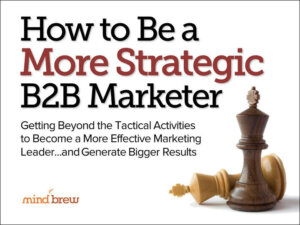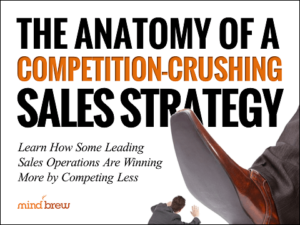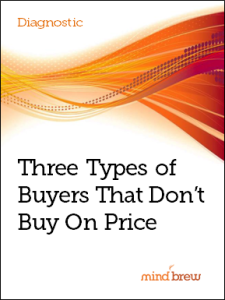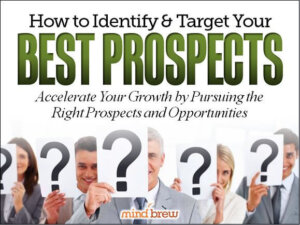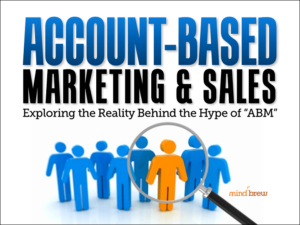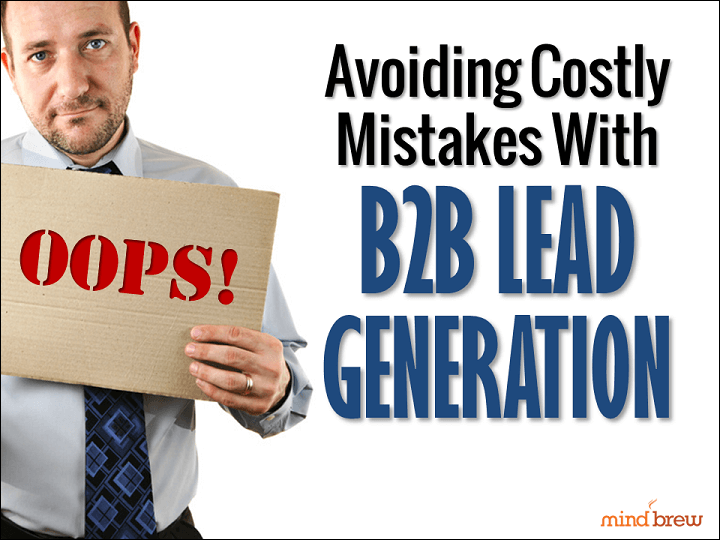If you put a whole bunch of B2B marketing and marketing ops folks in a room and asked them about their marketing strategy, most of them would give you one of two answers. One group (based on our experience, probably the biggest group) would answer with a list of the marketing tactics they are currently using. They would say something like, “Our marketing strategy this year focuses on trade shows, white papers, and press releases.” Those are all fine marketing tactics, but a list of tactics is not really the same thing as having a marketing strategy.
A second, slightly smaller group, would probably recite for you their mission or vision statement. These folks have probably just spent months refining their corporate boilerplate statements, and they’re usually really proud of the results. Again, mission and vision statements are all well and good, but not really a marketing strategy.
Your hypothetical group of marketing people would also have a handful of professionals who had an actual written document that lays out their marketing strategy. And we’re willing to bet that this small group would probably be the most successful marketers among those gathered.
Why?
Having a written marketing strategy lays out exactly what you are going to do—and just as important, what you are not going to do. It provides a focus for all of your marketing activities and a way to evaluate whether certain tactics are moving you closer to your goals and objectives or not. It sets a solid foundation that guides the day-to-day work that happens in marketing and sales.
So why don’t more B2B marketers have a written strategy document? We suspect that most them just don’t know how to go about creating a marketing strategy.
A Marketing Strategy Template
Since we launched the Marketing Ops Journal, we’ve had several people ask us how to create a marketing strategy. We like to rely on a marketing strategy template based on the “five Ws and an H” that all journalism students study: Who, What, When, Where, Why, and How. The format of your marketing strategy isn’t really all that important, but in our experience, the best strategies answer all of these questions:
- Whom are you trying to serve? A lot of strategy documents will answer this question under a heading that says “target audience” or “target market.” In this section, you have to be very clear about defining your prospects. And “everyone” or “anyone who is willing to buy” are not acceptable answers. Nor are generic descriptions like “the Fortune 1000.” Your targeting definition should describe prospects that have similar needs, problems, motivations, and buying criteria, with whom you have a better than average shot at winning the business. NOTE: This is the single most important question that your marketing strategy needs to answer, because it drives everything else.
- What problems are you solving? Sometimes this answer is labeled the “customer need” or the “pain point.” The key is to define it from the customer’s point of view, not the company’s point of view. No one in your target audience cares that Product X rounds out your product line and gives you a way to upsell existing customers. Instead, this section of your marketing strategy needs to say something like, “Product X will help manufacturers increase their profits by 10 percent while spending 5 percent less time on paperwork.”
- Why are you the best possible choice? This might also be called your “strengths” or “selling points.” Don’t forget that your target market always has alternatives. Even if you don’t currently have any competitors, your prospects can always choose not to buy anything at all. The best marketing strategies will list all the reasonable alternatives and explain why your products are better.
- Where will prospects do business with you? This section outlines your distribution channels. Will you use direct sales, channel sales, ecommerce, retail, a combination, etc.? This part of your marketing strategy may not change a lot from year to year, but you may have different distribution channels for different products, and it’s a good idea to list them all out so that you don’t lose sight of that reality.
- When will you engage target prospects? The easy answer to this question is “whenever they are willing to buy,” but of course, that’s not really specific enough for your marketing strategy document. Consider whether there is explicit demand or primarily latent demand for your products. The answer will help determine the point in the buying process where you will engage with prospects. In explicit markets, you may be engaging with customers primarily in the evaluation stage when they are deciding among the various vendors, but in latent markets, you might need to contact prospects before they are even aware that they have a problem.
- How will you reach your target prospects? With this question, you’ll be moving beyond defining your marketing strategy and starting to define your tactics. Leverage all of the strategic decisions you’ve made and select the marketing tactics that are most appropriate. To be most effective, strategy should be driving tactics, not the other way around.
Need more help creating a marketing strategy? We recommend watching the webinar on How to be a More Strategic B2B Marketer. It helps you get beyond day-to-day tactical activities and do the strategic thinking that can help you create the conditions for profitable growth at your company. It also has some marketing strategy examples and tips from B2B marketing leaders.

